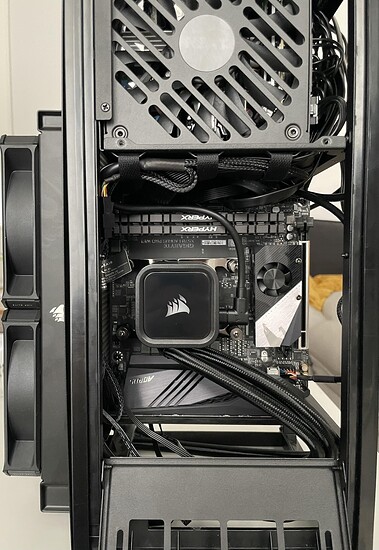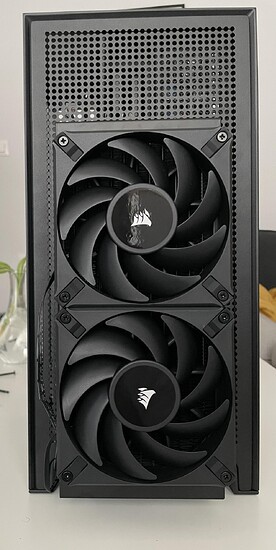Hello,
I have an NZXT H1 case with the following hardware in it:
- Gigabyte X570i Aorus Pro
- AMD Ryzen 9 3950X
- 32GB 3600MHz DDR4 RAM
- 1TB NVMe Gen4 SSD
- Nvidia GTX 1080Ti
It was built from some left over parts from when I upgraded my main PC and was used for Linux development (RHEL7). However, I’d rather have it as an all-in-one server that can be used for storage, dev VMs and some light media streaming within the home network.
First thing I’d do is convert the 1GbE network to the 10GbE one, where all of the PCs on the network would have a 10GbE link to the NAS. That’s the straightforward part.
The not so straightforward part is the actual OS that I’d be running, as well as the storage that will be used and its layout. As for the requirements I have: I’m not much of a hoarder so I don’t expect to have a bunch of storage space, but I’d like for the hardware to be able to saturate the 10GbE network when needed. I don’t need redundancy per-se, it would be a nice to have but I’d rather have the performance since data that’d be on the server isn’t critical and I don’t care if it’s lost a few years down the road (that’s just my view at the moment, it might change later).
Since H1 can only fit 2 2.5’’ SATA drives (in its drive bay, but a third one would most likely be able to fit somewhere and dangle around) and I’d like to avoid spinning rust, I’m leaning towards having 2 4TB SATA 3 SSDs, and here are the contenders:
- Samsung 870 EVO - $400
- Crucial MX500 - $400
- Micron 5300 PRO - $600
- SanDisk Ultra 3D - $450
- Seagate IronWolf 125 - $900
- WD Blue SSD - $500
- WD Red SA500 SSD - $580
- Intel DC S4510 - $450
From the price alone I’d choose either Samsung 870 EVO or Crucial MX500, but I’m not sure if they’d play nice with whatever OS I’d use.
From what I’ve gathered I have a bunch of options, but the 3 most common ones would be:
-
UnRaid - Either with ZFS plugin or XFS/BTRFS natively. As far as I can understand (and I’ve seen a bunch of conflicting reports) I can’t really use SSDs in an array (due to TRIM being unsupported). I can use them as a cache pool where TRIM will work fine, although I’m not sure of the implications - will that data be non-volatile and remain there after shutdowns or power losses? Can cache pools be striped for better performance? What if I decide that I want parity and add a third drive (I know that it has to be an HDD)? Would I need and NVMe SSD as a cache… for the cache pool?
-
TrueNAS Core/Scale - From everything I’ve seen I should be okay with it and my intended use case (not completely sure though). Although I’d prefer UnRaid due to it’s UI and user friendliness
-
Any Linux distro with simple SMB shares configured - Easiest for the simple use case I have, but I’d have to do most of the stuff manually when it comes to VMs and media streaming though
I’m still very new to this and could use some suggestions, either based on the stuff I mentioned or something completely different.
Thanks.

